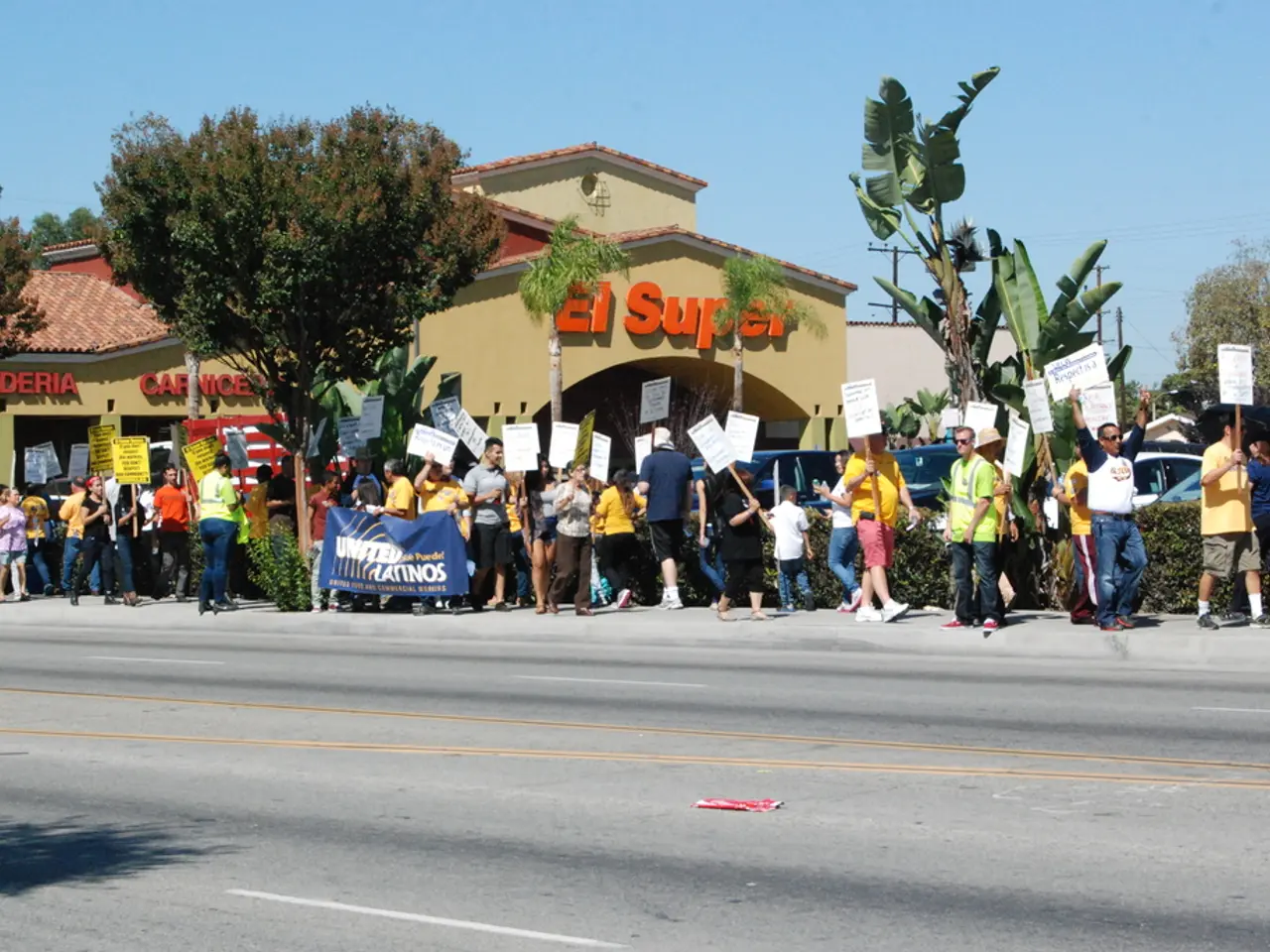Highest Court Upholds Unwavering Respect for Trump
The Supreme Court's recent actions suggest a new course, with the conservative majority largely permissive towards President Trump's executive actions, particularly in departmental restructuring and immigration policy enforcement.
In a significant move, the Court allowed the Trump administration to proceed with its plan to reduce the force and potentially dissolve the Department of Education, lifting a lower court's injunction that blocked layoffs of about 1,400 employees. This decision enabled the administration to advance its directive to reduce federal bureaucratic presence in education, emphasizing efficiency and returning authority to states.
On immigration-related actions, while the Court allowed Trump’s administration to move forward with ending birthright citizenship—a highly controversial policy—they also rejected Trump’s claim that his actions in invoking an 18th-century wartime statute for deportations were immune from judicial review. The Court uniformly blocked deportations pending litigation, demonstrating limits to executive power in this domain.
The Court also ruled that federal district judges do not have authority to issue nationwide injunctions blocking laws or policies, which has benefited the Trump administration by preventing broad judicial orders against its initiatives.
A major decision confirmed that former Presidents have at least presumptive immunity for official acts, which supported Trump’s position and arguably cleared a legal path for his 2025 return to power.
However, on matters involving constitutional checks—such as due process in deportation—the Court has exercised restraint to curb executive overreach. For instance, in the birthright citizenship case, the Court blocked Trump's actions, citing the need for due process.
Notably, the Supreme Court has repeatedly undercut US district court judges who have held hearings and issued orders to check Trump's actions. In a significant case related to Trump's second term, Justice Amy Coney Barrett pointed out the limited ability of lower court judges to block arguably unconstitutional moves.
The Court's decisions have not been without controversy. In the birthright citizenship case, Justice Barrett and Justice Jackson traded insults, suggesting a lack of mutual respect. Justice Sotomayor, joined by Justices Kagan and Jackson, expressed concern about the Executive's intent to break the law in dissolving the Department of Education. Justice Jackson also expressed concern about "the state of our democracy."
Dissenting Justice Elena Kagan wrote that the Court's actions may facilitate the permanent transfer of authority, piece by piece by piece, from one branch of Government to another.
In conclusion, the current Supreme Court state can be summarized as largely enabling President Trump’s agenda, especially in deregulation and immigration, but selectively enforcing judicial review limits to prevent unreviewable executive power.
The Supreme Court's decisions have shown a preference towards President Trump's agenda, notably in areas of politics such as departmental restructuring and immigration policy enforcement, aligning with his policy-and-legislation objectives. However, the Court has also imposed limits on executive power by blocking certain controversial actions, like Trump's plan to end birthright citizenship, due to constitutional checks and the need for due process. This dynamic between politics and the judiciary has led to general-news stories about the Court's controversial decisions and the associative criticism.








